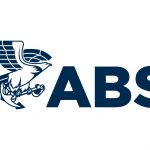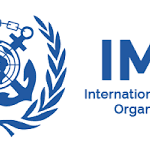Asia’s Low Sulfur Fuel Oil Refining margins surged to its highest level in nearly five months, while the market structure for the IMO 2020-compliant marine fuel grade also strengthened to its widest backwardation since early March, buoyed by tight prompt supplies on the back of a recent uptick in downstream bunkering activity.
Platts assessed the Singapore front-month crack spread for the 0.5% sulfur marine fuel grade against ICE Brent crude futures, which has gained more than $2/b in the week started Aug. 19 alone, 27 cents higher on the day at $12.77/b Aug. 21, S&P Global Commodity Insights data showed.
Platts last assessed the spread higher at $13.06/b March 25, Commodity Insights data showed.
The front-month refining margin for September was pegged even higher at $13.25/b in midafternoon Asian trading Aug. 22.
The Singapore marine fuel 0.5%S September-October swaps time spread was pegged at $12.75/t in midafternoon trades on Aug. 22, up from the Platts assessment of the spread at $11.55/t in the preceding session.
The M1-M2 intermonth spread for FOB Singapore 0.5%S marine fuel swaps — which has widened about 58% so far this week — averaged a backwardation of $9.97/t in the week started Aug. 19, compared with an average of $7.23/t in the previous week, Commodity Insights data showed.
“The [LSFO] market feels a bit tighter with lesser arbitrage volumes coming from the West… And it looks like there’s more outflow demand as well from China,” said a Singapore-based trader, adding that some recent arrivals of cargoes that were not on-specification grades have also contributed to market tightness.
Another trader said that the sustainability of the recent LSFO market strength would depend on China. “If [China] pulls a lot [of LSFO] … I think everyone [will be] buying into [the market strengthening].”
The downstream market in Singapore received support in recent weeks as several inbound cargoes failed to meet product specifications, curbing product availability and causing loading delays from late July through early August.
On the back of resumptions of previously deferred ex-wharf loadings for downstream LSFO supply in the past couple of weeks, sellers eager to fulfill end-users prompt requirements and catch up on sales volumes lost during late-July, gradually eased delivered premiums, bunker suppliers said.
Most recently, LSFO bunker premiums, especially for very prompt requirements, were more supported. Fewer downstream players offered out balance barging slots and cargoes for the rest of August and were more focused on cutting deals for early September onward. Meanwhile, the overall demand was mostly moderate at best or seen maintaining “healthy” volumes.
The Platts Singapore-delivered marine fuel 0.5%S bunker premium over the benchmark FOB Singapore Marine Fuel 0.5%S cargo value softened to average $18.56/t Aug. 16-21, significantly down from the $23.16/t across the first half of August when downstream on-specification product availabilities were much tighter, Commodity Insights data showed.
“It’s true, the LSFO [bunker] demand has picked up, but recently, the downstream premiums are moving higher too,” said one Singapore-based bunker trader, adding that higher delivered premiums were starting to weigh on end-user appetite.
According to the bunker trader, “Bunker prices at a few regional ports are quite similar to that of Singapore. If the premiums here continue to climb, it may not be competitive… The short-term [outlook] is still probably okay, but there seems to be a wide divergence on suppliers’ outlook on prices.”
In addition, some market participants attributed the recent strength in fundamentals to some momentary shortages in feedstock components for the LSFO blending pool for prompt August supply, thereby limiting competition in downstream markets.
Commodity Insights data showed that Platts assessed the Singapore 0.5%S marine fuel cargo’s cash premium to Mean of Platts Singapore Marine Fuel 0.5%S assessment 50 cents/t higher on the day at $7.75/t Aug. 21, its highest level since July 29, when it was assessed at $8.38/t.
Some traders, however, remained skeptical about LSFO fundamentals continuing their upward momentum going forward, as steady shipments of Low Sulfur Straight Run Fuel Oil from Nigeria’s new Dangote refinery continue to flow into Singapore.
Exports from Kuwait’s Al Zour refinery could also potentially increase in coming weeks after peak summer power generation demand wanes from September onward.
Two market sources said that some planned refinery maintenance at Al Zour over the fourth quarter, however, could limit its LSFO exports.
Meanwhile, sources said Indonesia’s Balikpapan refinery was also expected to maintain a high level of LSFO exports in the near term, adding to regional stockpiles.
Source: S&P Global






